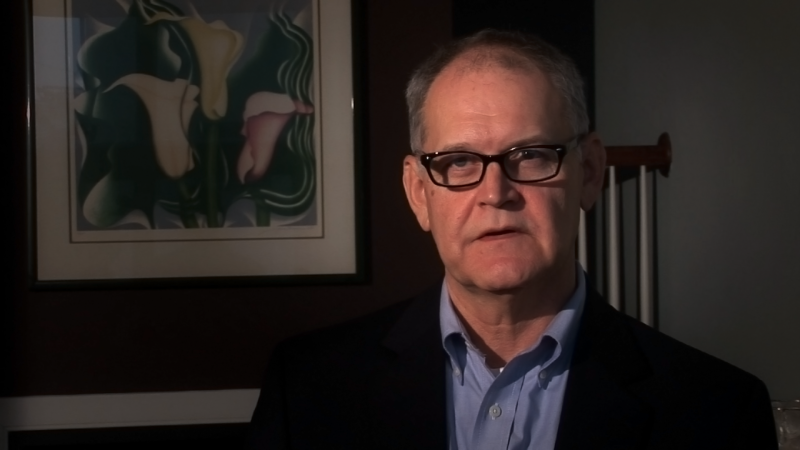Submitted by Wendell Potter on
In his quest to win the Republican presidential nomination, Texas Gov. Rick Perry is perpetuating a convincing hoax: that implementing Texas-style tort reform would go a long way toward curing what ails the U.S. health care system.
 Like his fellow GOP contenders, Perry consistently denounces "Obamacare" as "a budget-busting, government takeover of healthcare" and "the greatest intrusion on individual freedom in a generation." He promises to repeal the law if elected.
Like his fellow GOP contenders, Perry consistently denounces "Obamacare" as "a budget-busting, government takeover of healthcare" and "the greatest intrusion on individual freedom in a generation." He promises to repeal the law if elected.
Unlike those in the "repeal-and-replace" wing of the Republican Party, however, Perry has emerged as leader of the "repeal-and-let-the-states-figure-it-out" wing that believes the federal government has no legitimate role in fixing America's health care system.
"To hear federal officials tell it, they've got all the answers on health care and it's up to the rest of us to sit, wait and embrace whatever solution -- if any -- they may eventually provide," Perry wrote in a newspaper commentary in 2009. "I find this troubling, since states have shown they know a thing or two about solving problems that affect their citizens."
Even as he points with pride to the alleged benefits of malpractice and other tort reforms that have been enacted during his tenure as governor of Texas, Perry says he is opposed to tort reform at the federal level. He cites the 10th Amendment to the Constitution, which states-rights advocates say limits the role of the federal government.
But if Perry had his way, all the states would do as Texas did in 2003 when lawmakers enacted legislation, which he championed, limiting the amount of money juries can award patients who win malpractice lawsuits against doctors and hospitals. The legislation capped non-economic (pain and suffering) damages at $250,000 in lawsuits against doctors and $750,000 against hospitals. A few months after he signed the bill into law, the state's voters narrowly passed a constitutional amendment, also endorsed by Perry, which had the same effect. Proponents of the amendment wanted to be sure the new law would be constitutional.
Texas, he wrote in that 2009 commentary "stands as a good example of how smart, responsible policy can help us take major steps toward fixing a damaged medical system, starting with legal reforms."
As a result of the 2003 tort reform law, malpractice liability insurers reduced their rates in Texas and, according to Perry, the number of doctors applying to practice medicine in the state "skyrocketed."
He says that in the first five years after tort reform was enacted, 14,498 doctors either returned to practice in Texas or began practicing there for the first time.
Tort Reform Backfires in Texas
That certainly sounds impressive -- so long as you look at that number in isolation. But when you look at how Texas stacks up with the rest of the country in terms of physician growth in direct patient care, tort reform appears to have given Texas no leg up in competition with others states for doctors. In fact, according to statistics compiled by the American Medical Association and other physician organizations, Texas has actually lost ground when it comes to the number of doctors practicing in the state since tort reform was enacted. Big time.
In 2008, the number of physicians in patient care per 10,000 civilian population in the United States was 25.7. At just 20.2 doctors per 10,000 people, Texas ranked near the bottom of the 50 states. In fact, only nine states fared worse. In 2000, three years before tort reform, Texas was still bringing up the rear, but not as badly. Back then, 11 states fared worse than the Lone Star state.
Even more revealing, the number of doctors in patient care increased 13.2 percent nationwide from 2000 to 2008. It increased only 12.8 percent in Texas. The rate of growth was actually greater in 41 other states and in Washington, D.C. than it was in the Lone Star state.
It is true that malpractice insurance rates dropped in Texas after tort reform was enacted, but Texans would be hard pressed to claim any direct benefit from that drop -- except, that is, Texans who are doctors.
The Dallas Morning News published a chart earlier this year showing that the average malpractice rate charged ob/gyns in Texas by the state's largest domestic insurer of physicians fell from $53,752 in 2003 to $33,881 in 2011. The paper reported drops of similar percentages for doctors in family practice and general surgery.
Advocates of tort reform have long claimed that one of the reasons for escalating health care costs is the "defensive medicine" doctors practice, such as over-treating and prescribing more medications and diagnostic tests than necessary, out of fear of being sued. Well, if Texans believed their own health insurance rates would go down once tort reform made defensive medicine less prevalent, they have by now been disabused of that notion. The chances of a Texas family saving a few bucks on premiums would actually be greater if they moved to another state.
In 2010, the average premium for family coverage in Texas was $14,526. That's $655 higher than the U.S. average. Those numbers seem to indicate that doctors have not passed on their own insurance savings to their patients and that they are not practicing medicine any less defensively than before tort reform was enacted.
 Not only are Texans paying more for their own insurance while doctors are paying less for theirs, their chances of getting employer-subsidized coverage is less than it would be if they lived in another state. The Dallas Morning News, citing statistics from the Agency for Healthcare Research and Quality and other sources, reported that a smaller percentage of employers in Texas offered coverage to their workers last year than in the U.S. as a whole (51 percent and 53.8 percent, respectively). And the Texans who do have coverage through the workplace are contributing far more out of their own pockets for that coverage than people who live in most other states. In Texas last year, the average employee contribution toward company-sponsored coverage was $4,500. The U.S. average was much lower: $3,721.
Not only are Texans paying more for their own insurance while doctors are paying less for theirs, their chances of getting employer-subsidized coverage is less than it would be if they lived in another state. The Dallas Morning News, citing statistics from the Agency for Healthcare Research and Quality and other sources, reported that a smaller percentage of employers in Texas offered coverage to their workers last year than in the U.S. as a whole (51 percent and 53.8 percent, respectively). And the Texans who do have coverage through the workplace are contributing far more out of their own pockets for that coverage than people who live in most other states. In Texas last year, the average employee contribution toward company-sponsored coverage was $4,500. The U.S. average was much lower: $3,721.
Another statistic Perry is not likely to mention when he talks about the benefits of tort reform is the number of Texans who are uninsured. The U.S. Census Bureau reports that Texas continues to be the state with the highest percentage of its residents without coverage, a whopping 25 percent last year, compared to about 16 percent nationwide. It was dead last in 2003 and it is dead last now.
All this should leave us wondering what "thing or two" states have come up with to solve the problems that affect their citizens. Considering the dismal state of health care in Texas, perhaps Perry had Massachusetts in mind.

Comments
Anonymous replied on Permalink
Texas Health Care Premiums
foxy replied on Permalink
Tort reform is a perverse joke